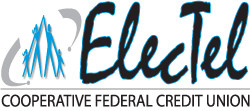Remember the good old days when you could assume a few days ‘float’ time between when you write your check and when the funds came out of your checking account? Well, with the new Check Clearing for the 21st Century Act (Check 21) now in effect, checking float has become obsolete.
With Check 21, your checks will now clear in hours rather than days. Don’t get sunk with overdrafts! We’re here to help with several service options associated with our checking accounts.


